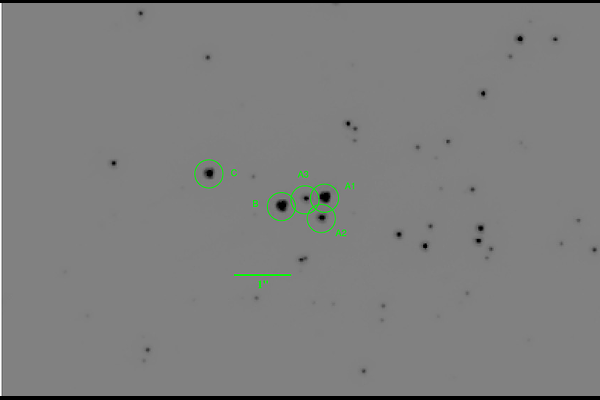A New Determination of the Mass of NGC 3603-A1: the Most Massive Binary Known?

A New Determination of the Mass of NGC 3603-A1: the Most Massive Binary Known?
Philip Massey, Sarah Bodansky, Laura R. Penny, Kathryn F. Neugent
AbstractThe star NGC 3603-A1 has long been known to be a very massive binary, consisting of a pair of O2-3If*/WN5-6 stars, which show Wolf-Rayet-like emission due to their luminosities being near the Eddington limit. The system has been poorly characterized until now, due to the difficulties of obtaining reliable radial velocities from broad, blended emission lines and the extreme crowding in the cluster. However, previously unpublished archival HST/STIS spectra revealed that some of the upper Balmer lines (seen in absorption) are well separated at favorable orbital phases, prompting us to obtain our own carefully-timed new HST/STIS spectra, which we have analyzed along with the older data. Radial velocities measured from these spectra allow us to obtain an orbit for this 3.77298 day system. We also used archival STIS imaging of the cluster to obtain a more accurate light curve for this eclipsing system, which we then modeled, yielding the orbital inclination and providing values for the stellar radii and temperatures. Together, these data show that the NGC 3603-A1 system consists of a 93.3+/-11.0 Mo O3If*/WN6 primary with an effective temperature of 37,000 K, and a 70.4+/-9.3 Mo O3If*/WN5 secondary that is slightly hotter, 42,000 K. Although a more massive binary is known in the LMC, NGC 3603-A1 is the most massive binary in our own Galaxy for which a direct measurement of its mass has been made by a fundamental method. The secondary has been spun up by mass accretion from the primary, and we discuss the evolutionary status of this intriguing system.